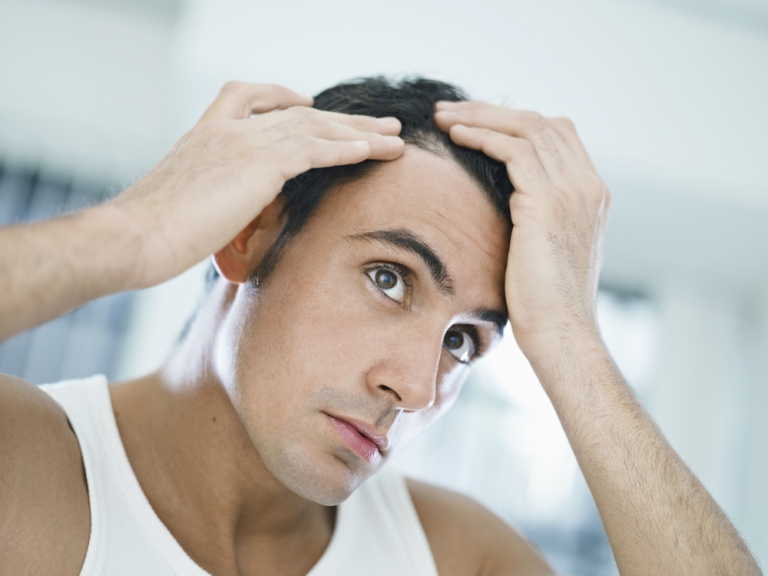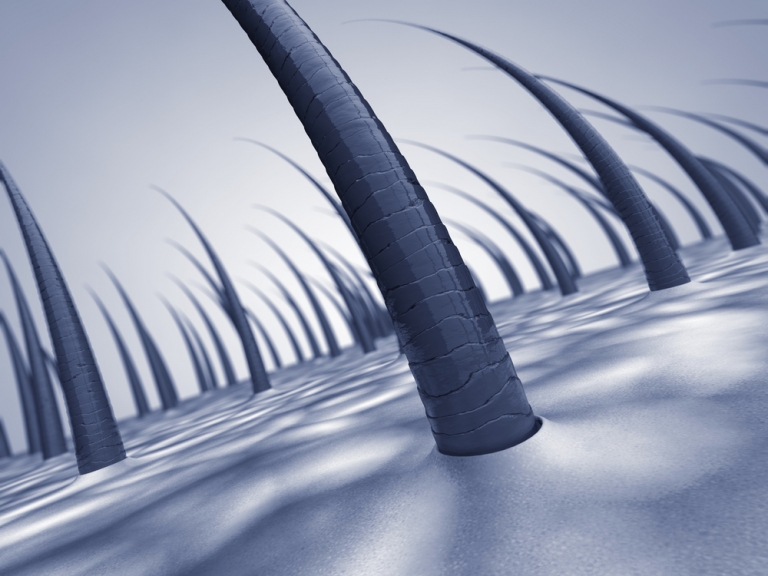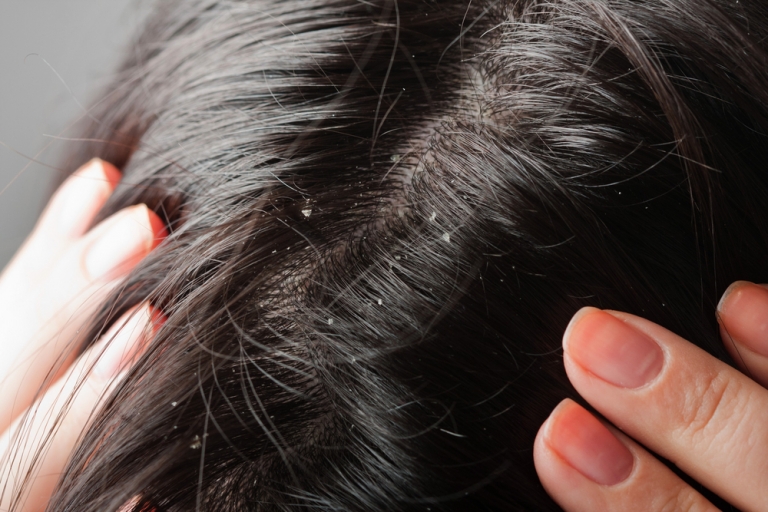
Hair has always been one of the most important aspects of personality and aesthetics of a person. No better way to put this across, than the above quote.
This is also the very reason why hair thinning or baldness, are serious concerns for those who have to cope with hair loss problems. Women, equally as men, also suffer from hair loss problems as we’ve already seen a Singaporean woman taking her condition - alopecia areata, public some years back. In fact, fewer than 45% of women go through life with a full head of hair. [i]
A glimpse of your hairline in the mirror might reveal to you that it has taken a slight retreat backward from your forehead. If that is the case, at least you aren’t alone. Taking a look around you, you’ll notice that men’s hair loss in Singapore, especially at an early age is an issue.

Hair Loss & Age - Is there a Connection?
While losing your hair may not necessarily be a health concern, it can have a deep impact on your esteem, especially when it comes knocking in your twenties. Why are you undergoing hair loss at such a young age? Hair loss should only affect the elderly, no?
Unfortunately, this is no longer the case. While some causes of hair loss are genetic, some are simply due to poor nutrition, inappropriate hair and scalp care or diseases.
What can you do to reverse or slow down the process? The first step to tackle any doubt of a hair loss issue, is a proper diagnosis from a certified trichologist. If you start noticing large amounts of hair shedding while combing or the hairline is retracting naturally, a visit to the trichology centre is due.
A trichologist is a medical expert specializing in hair loss and scalp related problems, such as thinning, baldness, breakage, and itchy or flaking scalp. Their forte lies in medical and cosmetic practices to diagnose and treat hair thinning, or scalp and hair conditions.
A visit to a trichology centre would include a thorough consultation that can take up to an hour. The trichologist will discuss with you all aspects of your lifestyle including diet and stress levels among other factors. Your medical history can also be used, a scalp scan is conducted and diagnosis or treatment options will be discussed.
Proper Diagnosis for Hair Loss Is Key

The diagnosis of your hair loss forms the first integral step to getting appropriate treatment to reverse hair loss. Through a scalp scan, it’s possible for the trichologist to analyse your hair thickness and follicular growth.
This procedure is non-invasive and painless. It takes a short period of time and you’ll get the following benefits from the diagnosis:
- Your hair thickness, density, and follicular growth are analysed to detect any anomalies at their early stage of development.
- In-depth analysis of the reasons for your hair loss: With an all-round assessment of your scalp condition, lifestyle, and nutrition, you will have a better understanding of the causes of your hair loss and the preventive steps moving forward
- Early detection of disease at an early stage of growth will help determine the best treatment and boost success probability.
For a more detailed analysis, your trichologist may request for hair bulb samples plucked from your scalp to be sent along to a laboratory for further tests. A medical report is then after sent to the trichologist to analyse and prescribe the suitable treatment and products.
Analysing Your Hair Loss
So what is the most effective treatment for your hair loss problem then after? Before we delve into that, it’s good to understand the structure and lifecycle of your hair, and the related hair conditions.
Hair has a simple structure and plays an important role in our well-being. It’s basically composed of keratin - a tough protein.

Each hair shaft is anchored into the scalp by a hair follicle. The hair bulb then forms the hair follicle base. It is in the hair bulb that living cells grow and divide to build hair shafts. The cells are then nourished by blood vessels to keep your scalp healthy. Sebum is found in the sebaceous glands hidden beneath the skin to keep the hair shafts and scalp moisturized.
Despite sebum playing an important role in the health of your hair and scalp, it can also be a source of a problem. Excess sebum on scalp can also result to hair loss by affecting the cycles of hair growth.
An oily scalp creates a suitable environment for fungal and yeast activities that result to dandruff, which causes falling out of hair. This is of particular importance for people living in South East Asia, where the climate all year round is humid and warm – Prime conditions for bacterial growth which causes hair loss, odour and more. [iii]
Over production of sebum leads to blockage of hair follicle – Resulting in inflammation and infection. Inflammation and infection reduces hair growth cycle productivity, leading to dull, unhealthy and greasy hair.

Apart from excess sebum production, there are also other hair conditions that result in hair loss, do scroll down to the addendum for more information.
The trichologist will be able to analyse your scalp scan to identify pain points and causes of hair fall for the diagnosis. Further tests can be suggested, along with treatment methods, products and advice then after to arrest the problem at hand.
Importance of Early Trichological Intervention

The first stage of hair loss is the shrinkage of hair follicles. That’s definitely something that you can’t see with your naked eye. Your hair follicles could be shrinking without you noticing. A tangible signal of this symptom could be the hair shaft losing its thickness in certain areas. When your hair follicles start to miniaturise, hair strands start to thin until they simply fall out. [iv]
In a bid to try and reverse or slow down a hair loss condition, people usually opt to visit a hair loss clinic to visit a trichologist only after the condition has become acute.
This shouldn’t be the case as to combat hair loss; a preventive approach should be adopted.
Seeking early treatment even when the signs are not visible is crucial to curb a developing hair condition, and attain a higher chance of hair retention.
Hair loss is just like any other health condition. Besides prevention being better than a cure, you’ll have a higher chance of recovering from your ailments by getting a diagnosis and treatment during the early stages of a condition. Early intervention helps in identifying and treating the cause of retracting hair, whether lifestyle, hereditary or environmentally.
Lifestyle related hair loss can always be treated easily by making changes to your daily routines, such as diet, hair products used and stress levels. However, it’s important to note that lifestyle changes and the hair renewal process is not an overnight process, hence earlier treatment of a condition would benefit the patient greatly.
Early Trichological Intervention Benefits
In the video above, Deborah Whelan – A leading trichologist with more than 20 years of experience, states that it is very advisable to seek professional advice for hair loss in the same way you visit a dentist – You wouldn’t wait till the tooth is lost before you sought out help, why should you wait for hair to fall too? Take the first step to prevent and treat hair thinning as early as possible.
Seeking early trichological intervention will give you a head start in retaining your crowning glory by either identifying underlying issues that are not known to many, as well as learning best practices to maintain a healthy scalp.
Deborah’s advice mirrors a recent study of women and drugs for hair loss. While women using oral anti-androgens and topical minoxidil did see hair re-growth, early diagnosis and initiation of treatment is desirable as these treatments are more effective at arresting the progression of hair loss than stimulating re-growth. [v]
The earlier you seek intervention from a trichologist, the better your chances of getting effective assistance. As hair condition worsens with time, the more your treatment options continue to dwindle with each passing day that you ignore hair loss signs. It’s always recommended to visit a certified trichologist on a regular basis, to keep in check your hair and scalp health, even before the signs of hair loss set in.
In an event where treatment has been delayed and your hair problems have become acute, the only better solution would be a hair transplant or hair weaves. Prior to that stage, prevention is always better than cure.
Hence, get a scalp scan done by a certified trichologist periodically to prevent unwanted stress and unnecessary delays.
References
[i] http://www.straitstimes.com/singapore/she-baldly-goes-public-with-disease
[ii] http://www.livestrong.com/article/301003-oily-smelly-scalp/
[iii] http://www.medicalnewstoday.com/articles/212896.php
[iv] http://www.americanhairloss.org/women_hair_loss/treatment.asp
Addendum
Alopecia Areata: Round patches of complete hair loss on the scalp. The cause of this condition varies greatly from stress to auto-immune issues. It results in the hair retracting backward.
Alopecia Totallis: Total loss of hair from the scalp due to untreated alopecia areata.
Folliculitis: Inflammation of the hair follicles caused by an infection of the Staphylococcus aureus bacteria.
Dandruff: Ongoing mild scalp inflammation that results in scaly scalp that is itchy and flakes off. This can also affect the face and ears.
Male Pattern Baldness/ Androgenetic Alopecia: A common cause of hair loss in most men. It results in hair loss at the crown area, a receding hairline or both. This is a genetic hair loss condition which can be inherited from one’s parents. Expression of the hair loss gene is dependent on androgens, a type of hormone; hence the condition is also referred to as androgenetic alopecia.
Ringworm: A fungal infection appearing as scaly and pink patches. It is more likely to be transmitted from animals than humans.
Traction Alopecia: A hair loss condition that results from physical trauma of a hair style such as dreadlocks, cornrows or tight hair buns
Trichotillomania: A rare alopecia that stems from stress, this is a condition which results from self-harming acts such as pulling one’s own hair.
Chemotherapy Drugs: Radiotherapy or chemotherapy drugs attack the cells that are rapidly growing. Since hair follicles also undergo rapid growth, the drugs find it difficult to discern them from cancer cells thus destroys them. The damage is not permanent though as hair grows back after about 8 weeks once the treatment has been ended.